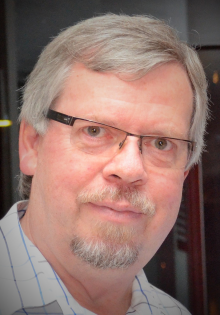The German Research Foundation (DFG) has been funding long-term projects in the form of Collaborative Research Centres (SFB) for over 50 years. In these programs, scientists conduct cross-subject and cross-university basic research that focuses on the structure of the applicant universities. Four collaborative research centres are currently being headed at the University of Paderborn. In this series of topics, the goals the scientists are pursuing are presented.
Researchers from Paderborn want to simplify and automate the development and provision of complex IT services
The development and provision of IT applications are highly complex processes today. Despite pre-built components, even ambitious IT experts can fail because of the numerous challenges. Since 2011, researchers from the University of Paderborn, have been pursuing the vision of “on-the-fly computing” (OTF computing) within the Collaborative Research Centre 901. Ideally, even users who do not have any special IT skills, should be able to create a customized IT service.
If you want to develop and use an IT application, you need different ingredients. In addition to the selection of the programming framework and suitable libraries, additional software may have to be produced. IT developers must also keep in mind that requirements can differ depending on whether the service is to be carried out on a smartphone, in the web browser or perhaps even in a special data centre. This results in a multitude of different challenges for which today specialists are responsible for. In the future however, this area will have to be automated much more, says Prof. Dr. Friedhelm Meyer auf der Heide, spokesman for the Collaborative Research Centre: “We see ourselves at the beginning of a new phase in the development and implementation of IT services. Approaches are already foreseeable that deviate from the 40-year-old principle. So far, software has been obtained, for example, by purchasing expensive and rather inflexible standard solutions. Our vision is to provide complex IT services through largely automated configuration and execution, which nevertheless respond individually to the needs of the users. "
Spontaneous, flexible, and user-friendly
The “on-the-fly” method reacts to these special needs, which enables IT users to flexibly combine services “in passing” or “spontaneously”. The decisive advantage: Requested IT services are configured promptly from existing services that software providers offer. According to Meyer auf der Heide, these IT services can also be carried out almost automatically in a data centre, which has the necessary know-how and the technical prerequisites to be able to perform the compiled services efficiently. “In order to make on-the-fly computing attractive for users and providers, we also have to develop methods for the user-friendly description of the requested IT services. Another challenge is to ensure the quality of service and to support the secure interaction of the participants in dynamically changing markets,” emphasizes the Paderborn scientist.
Interdisciplinary research as a driver of innovation
Working in the four project areas of the SFB 901, whose funding was extended last year to 2023 by the German Research Foundation (DFG) to around 10 million euros, thereby reaching the maximum funding limit, also requires the cooperation of various disciplines from the fields of computer science and Economics.
Various computer scientists taking part are involved in the development of a demonstration application for OTF computing, with the use of machine learning. This involves mathematical models and algorithms that enable a computer system to learn. Economical questions focus on the momentum of an on-the-fly market, for example, on acceptance and success factors of such markets. The Chair of Digital Cultural Studies aims to provide IT users with easily understandable explanations of configured services in natural language. In another project area, the Paderborn scientists are working with external partners from industry to enable knowledge transfer not only to industry but to also bring results from applied to basic research. Meyer auf der Heide: “The wide range of research in our collaborative research centre gives us a unique selling point that cannot be found in this form, in any other collaborative project. The integration of many disciplines is one of the most important innovations in on-the-fly computing. "
Press and Communication Unit, Kamil Glabica



